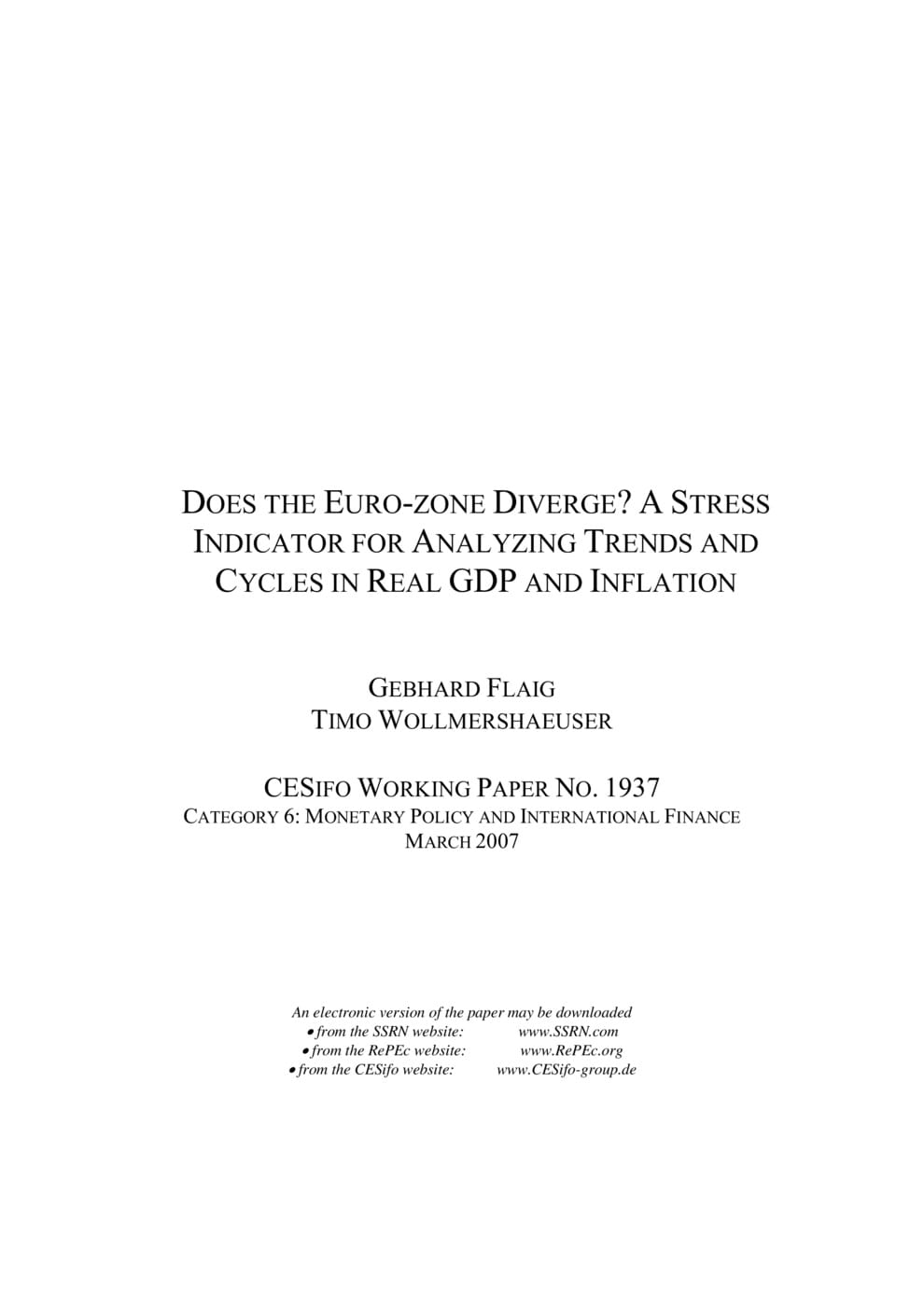Does the Euro-zone Diverge? A Stress Indicator for Analyzing Trends and Cycles in Real GDP and Inflation
CESifo, Munich, 2007
CESifo Working Paper No. 1937

This paper presents a stress indicator for the Euro-zone that summarizes developments of trends and cycles in real GDP and inflation in the member countries. Stress in a country is defined as the difference between the country’s actual short-term interest rate and the interest rate that would prevail if that country was able to follow an “optimal” monetary policy. The optimal monetary policy rule corresponds to the policy rule that was adopted by the country in the pre-EMU period and depends on the trend growth rates of GDP and consumer prices as well as on the related cyclical components. The main results are that stress in the Euro-zone is mainly due to different trend growth rates and that for most of the Euro-zone countries interest rates have been too low over the 1999-2005 period. Stress in Germany is close to zero, implying that the ECB continues the policy of the Bundesbank.
Monetary Policy and International Finance